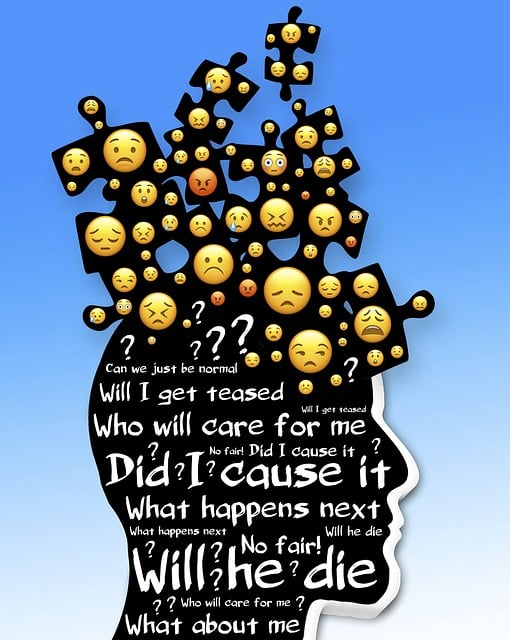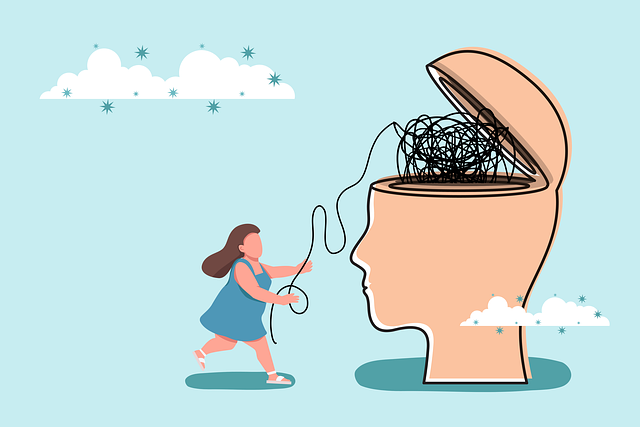Community outreach programs play a pivotal role in bridging healthcare gaps for underserved populations, particularly young adults and geriatrics, by offering tailored mental health services. These initiatives address unique challenges like burnout prevention for younger individuals and age-related mental health concerns for seniors. Effective outreach involves cultural sensitivity training for healthcare providers and demographic-specific communication strategies. By tailoring therapy and fostering community connections, these programs enhance mental well-being, improve access to care, and ultimately boost quality of life for both young adults and geriatrics. Strategic KPI tracking ensures program success and guides future adjustments to better meet the specific needs of these diverse groups.
Community outreach programs play a vital role in enhancing societal well-being by providing tailored support to specific groups. This article delves into the significance and implementation strategies of such initiatives, focusing on young adults and geriatrics. We explore how understanding target audiences enables the design of effective therapy programs. By examining successful outreach techniques, we uncover ways to engage communities and overcome barriers. Additionally, we emphasize the importance of measuring success to ensure these programs have a lasting impact, particularly in the areas of therapy for young adults and geriatrics.
- Understanding Community Outreach Programs: Their Role and Impact
- Identifying Target Audiences: Young Adults and Geriatrics
- Designing Effective Therapy Programs for Each Group
- Implementing Outreach Strategies: Engaging Communities and Overcoming Barriers
- Measuring Success: Evaluating the Effectiveness of Community Outreach Programs
Understanding Community Outreach Programs: Their Role and Impact

Community outreach programs play a pivotal role in fostering connection and enhancing well-being within diverse populations. These initiatives are designed to bridge the gap between healthcare services and communities, often reaching underserved groups such as young adults and geriatrics. By implementing therapy for young adults and geriatrics, these programs address unique mental health challenges specific to each demographic. For instance, mental wellness coaching programs development tailored for young adults can help navigate transitional periods, while burnout prevention strategies are crucial in alleviating stress among older adults.
Beyond direct therapeutic interventions, community outreach strengthens overall mental wellness by promoting self-care routine development for better mental health. By engaging with communities through these initiatives, organizations not only improve access to care but also foster a sense of belonging and support, ultimately contributing to enhanced resilience and quality of life.
Identifying Target Audiences: Young Adults and Geriatrics

Identifying target audiences is a crucial step in designing effective community outreach programs. When focusing on young adults and geriatrics, it’s essential to tailor services and communication strategies accordingly. Young adults often face unique challenges such as burnout prevention strategies for healthcare providers and navigating the complexities of adult life, while geriatrics may require specialized care and support for age-related issues.
Effective outreach requires understanding these distinct needs. Healthcare provider cultural competency training can play a vital role in bridging the gap between diverse communities and ensuring quality care. By employing appropriate communication strategies, organizations can engage both young adults and geriatrics, offering them the therapy for young adults and geriatrics they need while fostering a sense of connection and belonging within the community.
Designing Effective Therapy Programs for Each Group

When designing therapy programs for community outreach, it’s crucial to tailor approaches according to specific demographic groups. Young adults and geriatrics, for instance, have distinct needs and challenges. For young adults dealing with mental illness and stigma reduction efforts, group therapy sessions focused on peer support can be highly effective. These platforms encourage open dialogue, fostering a sense of community while promoting better understanding and reduced stereotypes.
In contrast, geriatrics often face unique barriers to accessing mental health services, including burnout prevention. Customized programs that address these issues with sensitivity might include one-on-one counseling sessions or intergenerational activities that promote social engagement and combat loneliness. Enhancing mental health awareness through such initiatives can significantly impact the well-being of both groups within the community.
Implementing Outreach Strategies: Engaging Communities and Overcoming Barriers

Implementing community outreach programs requires a strategic approach to engage diverse populations and address specific needs, such as depression prevention in young adults or geriatrics. Effective strategies involve tailoring messaging and services to cultural sensitivities, ensuring accessibility, and leveraging communication channels that resonate with target audiences.
Overcoming barriers often involves enhancing healthcare provider cultural competency training to improve patient-provider relationships. By fostering trust and understanding, providers can better address mental health concerns. Communication strategies must be inclusive, considering language, literacy, and technological access. Engaging communities through collaborative efforts creates a network of support, ensuring that resources reach those who need them most, ultimately improving mental well-being outcomes.
Measuring Success: Evaluating the Effectiveness of Community Outreach Programs

Measuring success is a critical aspect of evaluating the effectiveness of community outreach programs. When implementing initiatives aimed at providing therapy for young adults or catering to geriatrics, several key performance indicators (KPIs) can be employed. These include the number of individuals reached, engagement rates, and changes in behavioral or health outcomes over time. For instance, tracking the number of participants in public awareness campaigns development and their subsequent use of available services can demonstrate the program’s impact.
Effective communication strategies and conflict resolution techniques play a significant role in achieving these KPIs. Well-structured programs employ tailored messaging to resonate with diverse audiences, fostering open dialogue and encouraging participation. By measuring improvements in community members’ knowledge, attitudes, and behaviors post-program, organizers can assess the overall success and make data-driven adjustments for future initiatives.
Community outreach programs, by tailoring therapy for young adults and geriatrics, can significantly impact social well-being. By understanding target audiences, designing targeted programs, implementing effective strategies, and measuring success, these initiatives foster inclusive communities. Such efforts not only enhance access to mental health services but also create lasting positive changes for all ages.














